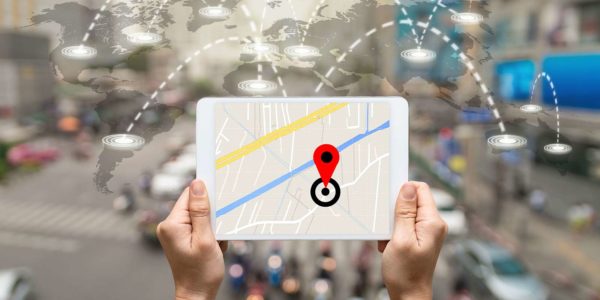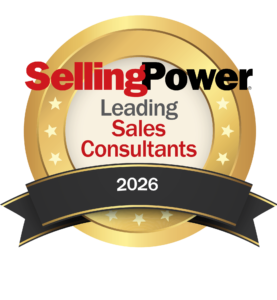A Sales Tech Tool Should Act as a GPS, Not a Map

Businesses implement sales technology for one of two reasons: to improve either its sales productivity or its selling effectiveness. Unfortunately, while most sales technology implementations are well intentioned with those goals in mind, these refinements often result in sales teams needing to learn counterintuitive procedures or entirely new processes that take time away from their actual job: selling.
Anyone who has ever implemented sales technology and had to train sales teams on new tools and processes knows that driving adoption is intensely challenging. But that’s not the sales reps’ fault. Sales teams should demand more out of their tech stack. Tools implemented should enhance their selling strategy and abilities – not take them out of their rhythm or work against their selling approach.
When we implement tools for sales teams that require us to document entirely new workflows for them or force them to work within the constructs of the way our internal systems work versus the ways that are natural for them to sell most effectively, we’ve already lost. The best sales technologies are the tools that provide a natural extension of the sales reps’ desired workflow – and ideally an extension of the desired customer experience – with the flexibility and ease of use that allows any rep to not only adopt the technology but make them say, “This makes things so much easier.”
In short, if you have to draw a map for a rep to figure out how to use your sales tool, you’re losing. Your sales tools should operate like a turn-by-turn GPS – delivering easy-to-follow processes that get sales reps where they need to go, with as little critical thinking as possible.
Despite the Rise of Sales Tech, Productivity Remains Low
Today’s sales reps spend just 34% of their time selling, on average, according to a survey by Salesforce. That’s 66% of their time on other tasks like data entry and quote generation. Almost two-thirds of their day is spent on manual tasks that take away from actually reaching their quota.
So, where’s the problem?
Traditionally manual processes, like quoting, are supported by technologies that give some productivity lift, but not always in the right areas – especially for companies selling somewhat complex products.
To continue with the quoting example, when sales reps are selling enterprise products or any type of sophisticated product, processes like selecting and configuring products are not simple.
How does the rep know which product the customer needs? What products are the best fit for their requirements? What other capabilities and complementary products should we also quote them on based on their requirements? You might have thousands of product SKUs and hundreds of use cases, and likely your rep isn’t an expert on all of them.
For most companies, in their current state, their current technology for this process is their CPQ solution (Configure, Price, Quote), which automates quote generation but still puts the burden of decision making on the rep to answer these questions. Sure, the technology will take their inputs and automate quote generation, but the hard decisions are still on the rep to figure out on their own. It’s giving them a map – where they need to determine the roads to take to get to success.
Complexity Simplified
Continuing with CPQ technology as an example, most conventional CPQ tools require reps to search through a catalog of products and bundles to manually find the right ones to quote their customer on. Reps need to be trained on how to find the products and which products should be used for which use cases and why. For simple products, this isn’t too bad. But for most businesses – with more complex products and extensive product catalogs – this leaves your sales reps out to dry.
The best sales tools have the intelligence and logic built in to take that type of manual work and thought process out of the equation. In this case, it should be able to take the inputs the rep knows about their customer (their requirements, use cases, location, industry, etc.), and use logic to automatically return the products that fit those requirements to be included on the quote.
And this is exactly what tools like Commerce Logic Engines help teams do. It gives sales teams a guided selling experience – a more natural way of taking customer inputs (requirements, use cases, etc.) – that uses programmed logic and intelligence to do the critical thought process for them (translating it into the products, parts, and variations that correspond with customer needs).
The technology fits more naturally into the solution selling approach that most experienced and enterprise sellers are trained to work within, instead of forcing them into a product-picking experience that’s more manual, harder to navigate, and does not align with the way they want to sell – or the way customers want to buy.
Because, let’s face it: Your customer isn’t coming to you asking for “Product 123456”; they are asking for “solve this problem, or fit these requirements” and expect you as the seller to be able to construct the solution for them.
Use Self-Service to Consumerize Your Selling Process
If putting guided selling technology into sales reps’ hands is like giving them a GPS, putting the same tools in the hands of your end customers is like giving them a self-driving car. Most buyers know their requirements and use case and are talking to a sales rep only because that’s the process you forced them into.
In a McKinsey survey, 99% of B2B buyers said they will purchase through a completely digital self-serve model. Almost all of them said they are “very comfortable” making single purchases of $50,000 or higher entirely via digital self-service.
So, then, why wouldn’t you expose that same guided selling experience to customers? This way, you can collect customers’ inputs, requirements, and needs as they articulate it themselves, and give them the more self-service experience they require.
Now that is a tool that makes sales reps’ lives easier. Not only is your sales tech eliminating manual steps from their sales process, but it also allows them to do their job more effectively and provides a more desirable customer experience all in one.
That’s the true power of a Commerce Logic Engine: enabling businesses to sell their products and services more effectively through both direct sales teams and digital commerce channels – with more guided, flexible, and consumerized selling experiences – by governing the logic, rules, and recommendations of how products can and should be configured and sold.
Companies that adopt this new method will no longer pause or step back to learn new techniques to keep pace. Instead, they will lead the transformation to a more successful and profitable go-to-market strategy that satisfies sellers and buyers.
Get our Enewsletter
Get the latest sales leadership insight, strategies, and best practices delivered weekly to your inbox.
Sign up NOW →